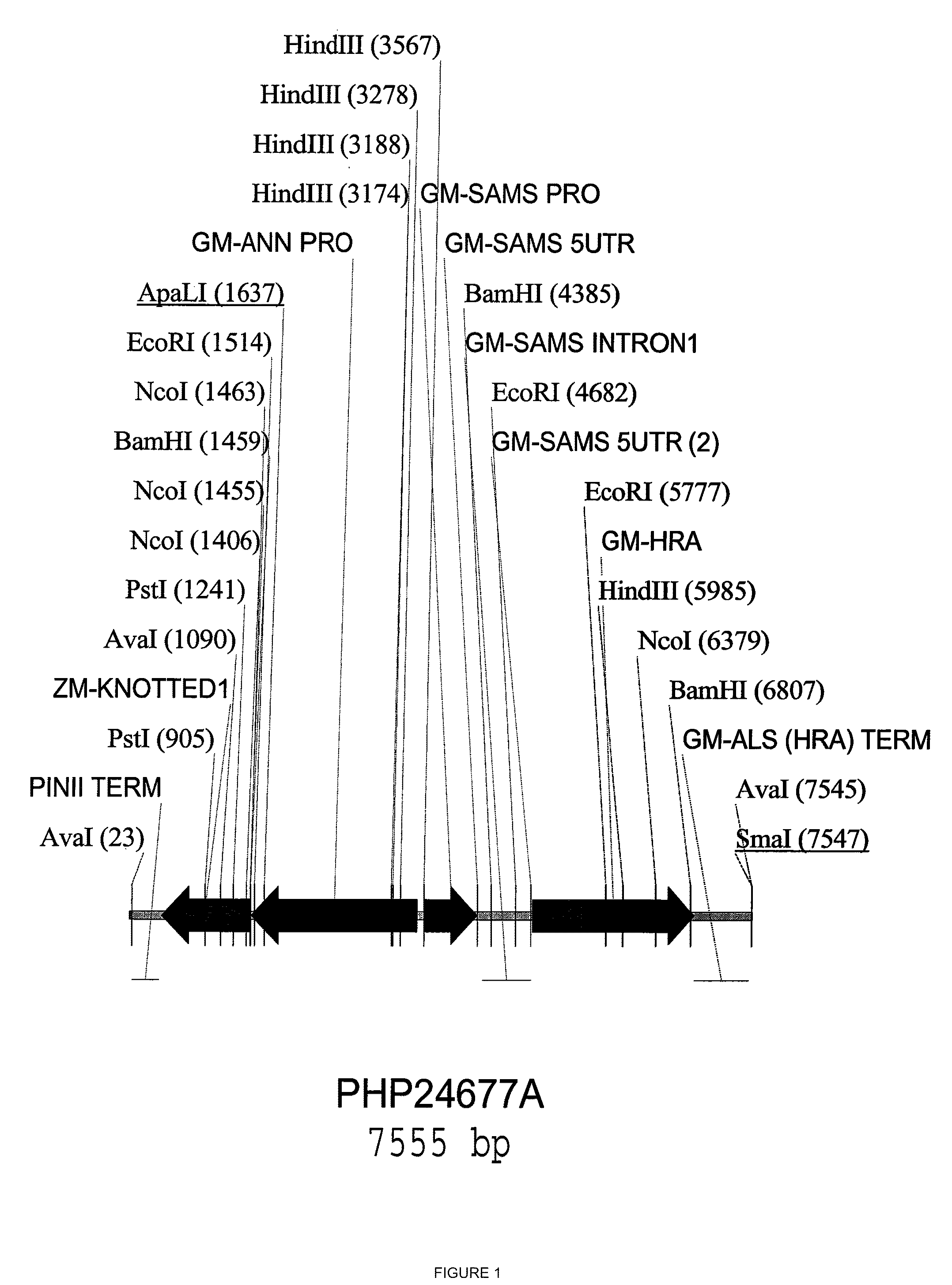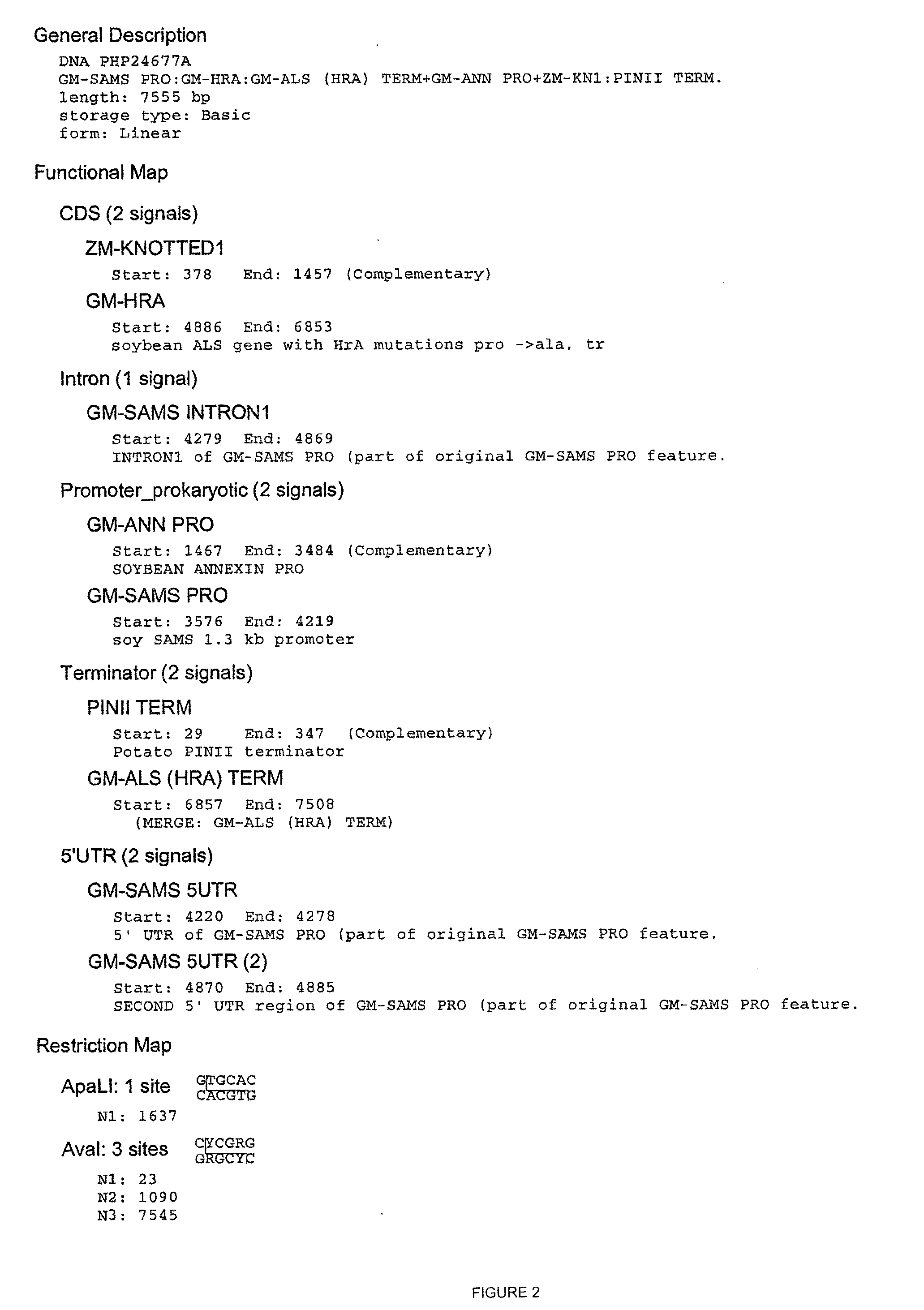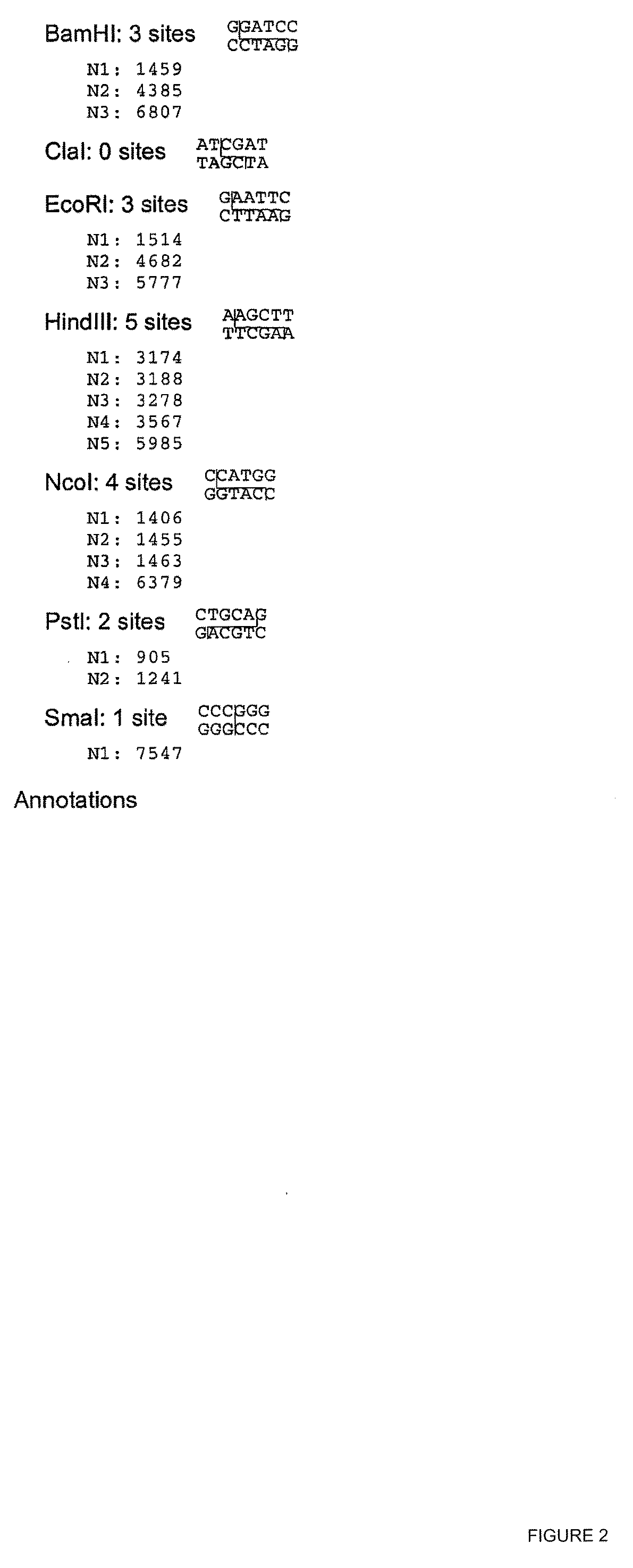Methods and Compositions for Enhanced Yield by Targeted Expression of Knotted1
a technology of knotted1 and expression, applied in the field of gene activity modulation to affect the yield of plants, soybeans, etc., can solve the problems of cytokinin modulation, achieve the effects of reducing the abortion of flowers, reducing the abortion of pods, and reducing the negative impact of final seed yield
- Summary
- Abstract
- Description
- Claims
- Application Information
AI Technical Summary
Benefits of technology
Problems solved by technology
Method used
Image
Examples
example 1
Soy Transgenic for Maize Knotted1 (ZmKn1) Shows Increased Yield
[0236]The maize knotted1 (kn1) gene encodes a nuclear homeobox (homeodomain) protein, which is thought to be a transcription factor important for maintaining the meristematic state of cells, thus being involved in regulation of cell development and differentiation (Vollbrecht, et al., 1991). It is a member of a family of closely related homeobox genes in maize. Zm-kn1 homologues have been isolated from rice, Arabidopsis, soybean, tomato and tobacco (see, references cited herein). Dominant mutations affecting the level, timing, or location of expression of this protein can result in gross morphological changes (Smith, et al., 1992).
[0237]The soybean annexin promoter (Gm-ann PRO) drives expression of Zm-kn1 in PHP24677A. The promoter is described in U.S. Pat. No. 7,129,089, EP1592799A2 and WO 2004 / 071178A2. The annexin promoter is an embryo- and seed-preferred promoter in soybean; it is most active in developing seeds at e...
example 2
Additional Constructs for Targeted Kn1 Expression
[0246]Another embodiment is illustrated by SEQ ID NO: 2 and FIG. 7. As can be seen, this construct, PHP35999A, also comprises the soy annexin promoter operably linked to maize kn1. However, it lacks the overlapping open reading frame of PHP24677A. Further embodiments may substitute, in place of the annexin promoter, other promoters which drive expression preferentially in developing floral or seed tissues, such as the Arabidopsis Lec2 promoter, the soy Ltp2 promoter and other tissue-preferred promoters such as those listed elsewhere herein. Further, the construct may comprise a kn1 gene from another species, such as Arabidopsis, wheat, sorghum or rice.
example 3
Soybean Embryo Transformation
[0247]Soybean embryos are bombarded with a plasmid containing the Maize ZM-knotted1, driven by GM-annexin promoter as follows. To induce somatic embryos, cotyledons, 3-5 mm in length dissected from surface-sterilized, immature seeds of the soybean cultivar Jack, are cultured in the light or dark at 26° C. on an appropriate agar medium for six to ten weeks. Somatic embryos producing secondary embryos are then excised and placed into a suitable liquid medium. After repeated selection for clusters of somatic embryos that multiplied as early, globular-staged embryos, the suspensions are maintained as described below.
[0248]Soybean embryogenic suspension cultures can be maintained in 35 ml liquid media on a rotary shaker, 150 rpm, at 26° C. with florescent lights on a 16:8 hour day / night schedule. Cultures are subcultured every two weeks by inoculating approximately 35 mg of tissue into 35 ml of liquid medium.
[0249]Soybean embryogenic suspension cultures may t...
PUM
| Property | Measurement | Unit |
|---|---|---|
| temperature | aaaaa | aaaaa |
| temperature | aaaaa | aaaaa |
| pH | aaaaa | aaaaa |
Abstract
Description
Claims
Application Information
 Login to View More
Login to View More - Generate Ideas
- Intellectual Property
- Life Sciences
- Materials
- Tech Scout
- Unparalleled Data Quality
- Higher Quality Content
- 60% Fewer Hallucinations
Browse by: Latest US Patents, China's latest patents, Technical Efficacy Thesaurus, Application Domain, Technology Topic, Popular Technical Reports.
© 2025 PatSnap. All rights reserved.Legal|Privacy policy|Modern Slavery Act Transparency Statement|Sitemap|About US| Contact US: help@patsnap.com



